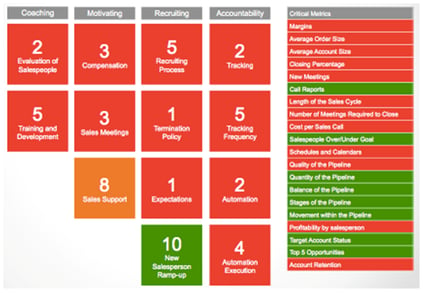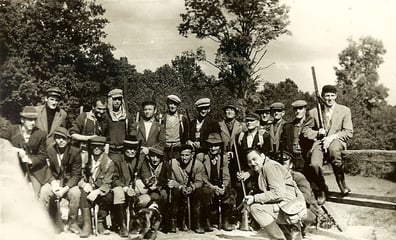I'm sure someone from the Harvard Business Review or the University of Pennsylvania Wharton School of Business could prove otherwise, but when it comes to defining success, I don’t believe there is an art to it.
- DeWitt Cheng, freelance art writer and critic, Bay Area, CA: Jorge Luis Borges wrote," Art has become, in the experimental 20th and 21st centuries, impossible to define."
- Robert Berman, Robert Berman Gallery, Los Angeles: "Reality is by agreement. The reality of art is usually by some kind of agreement. The arbiters are the museums, the museum curators, the people who spend their lives and their time actually being critical of what they see and judging what they see. If you add in four or five art critics who are then able to write about it, if you get four or five major collectors who are passionate about what they collect to patronize it, and several major auction houses to auction it, then a consensus or vetting process begins to unfold."

I don’t have the space to include, and you don’t have time to continue to read, all the articles available when I google "What Makes a Work of Art Successful", so we’ll let these two quotes validate that, when it comes to defining sales success, it is best not to be arbitrary or hope for a consensus.
Science Defined by Merriam Webster:
1: the state of knowing : knowledge as distinguished from ignorance or misunderstanding
2a : a department of systematized knowledge as an object of study the science of theology b : something (as a sport or technique) that may be studied or learned like systematized knowledge have it down to a science.
It is safe to say that if, within your sales managed environment®, you have "defining success" down to a science, then you will be in a better position to identify:
- Metrics that determine success
- What leading indicators lead to success (kind of like a math problem – although there are a multitude of formulas you could use to arrive at the number 4, there are probably only a couple that people would use:
- 2 +2
- 3 +1
- The square root of 16
- Define the goal to be achieved – it’s a number or a definitive outcome.
But…
Maybe there is something beside the math/science that has to go into it. I’m not sure it’s art (so I would love to hear from you what you think it is…) but here is what’s been noodling in my head for a couple of days.
This basketball season, Northwestern University of the Big Ten Conference, beat Michigan (Sorry, Jack, Mark and Marty...) with a buzzer beater full court pass and short jump shot. Take a look here: NCAA Video
In the aftermath, every sportscaster was talking about how this was the most wins in NWU history, it will be the first time EVER that the school has made it to the NCAA tournament and the coach, Chris Collins, has increased the number of wins every year he has been the head coach at the University. With the win over Michigan, they recorded their 21st win of the season. This information would lead us to believe that Coach Collins is successful because you are comparing his results to a standard that is generally accepted as success: Winning 20 games a season and qualifying for the NCAA tournament.
The head coach at Columbia University with the most wins is Lou Little. Lou coached the Lions to 110 victories! When Coach Ray Tellier retired from Columbia in 2002, the article announcing his retirement declared that he was the 2nd all-time “winningest” coach in Columbia’s history behind Lou Little. When I read this, I was impressed and happy for him; Coach Tellier was an assistant coach at the University of Connecticut when I played there.
What I didn’t know at the time of the article, but found out later, was that Coach Tellier, over a 13-year period, lead his teams to victory 42 times - a 30.7% winning record. And he was second on the list at Columbia. Coach Little, with the most wins, had a winning percentage of 48.8% and averaged just over 4 wins a season over a 26-year career as the head coach at Columbia.
What does this have to do with selling and determining sales success? Everything.
Companies collect lots of data and sales managers do their very best to spin a good story when outcomes are not equal to or greater than expectations (goals). Here are some examples of how outcomes are described when attempting to put a good spin on a bad outcome:
- We are trending the right direction
- Our year over year production is positive
- We are outperforming our peer group
- We have gone from #____ in stack ranking to #______
- We will finish in the top percentile of our district
- _____% of our team will qualify for incentive compensation
Those descriptions tell you nothing about how a team is actually performing.
What to do instead:
- Identify metrics that are critical success factors for your organization. (In most organization the #1 metric is revenue – it pays the bills.)
- Establish standards for those metrics that exceed previous performance levels and are consistent with what the market will allow. (You wouldn’t expect an operating unit in Bangor Maine to produce the same loan revenue as you would an operating unit in Manhattan.)
- Make sure you are looking at execution metrics so that your success is duplicable and you can identify choke points when there is failure.
Do this now:
- Call me about Scorecards for sales opportunities – 513.226.3913
- Email me to get more information about Performance Management – tony@anthonycoletraining.com






